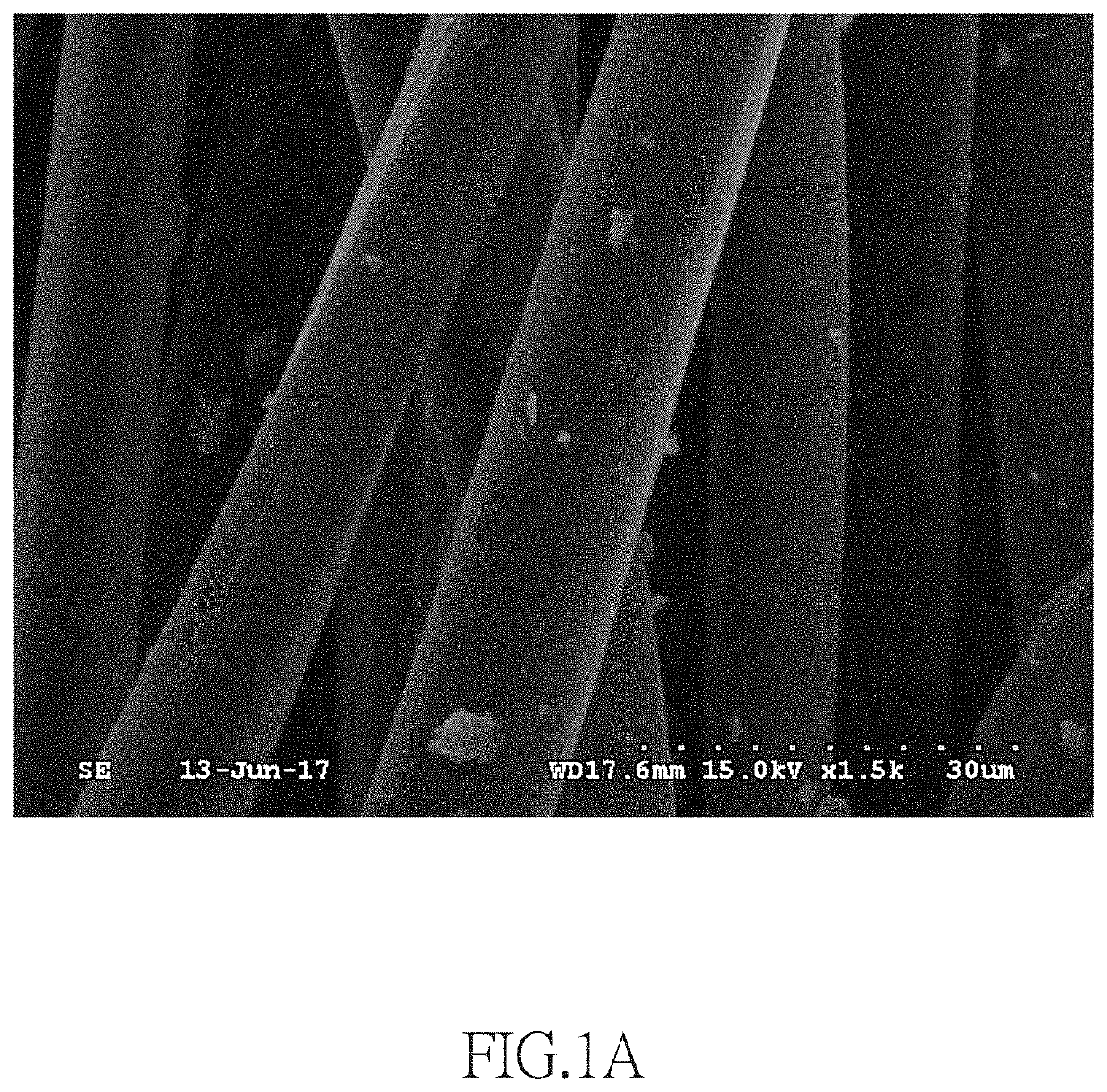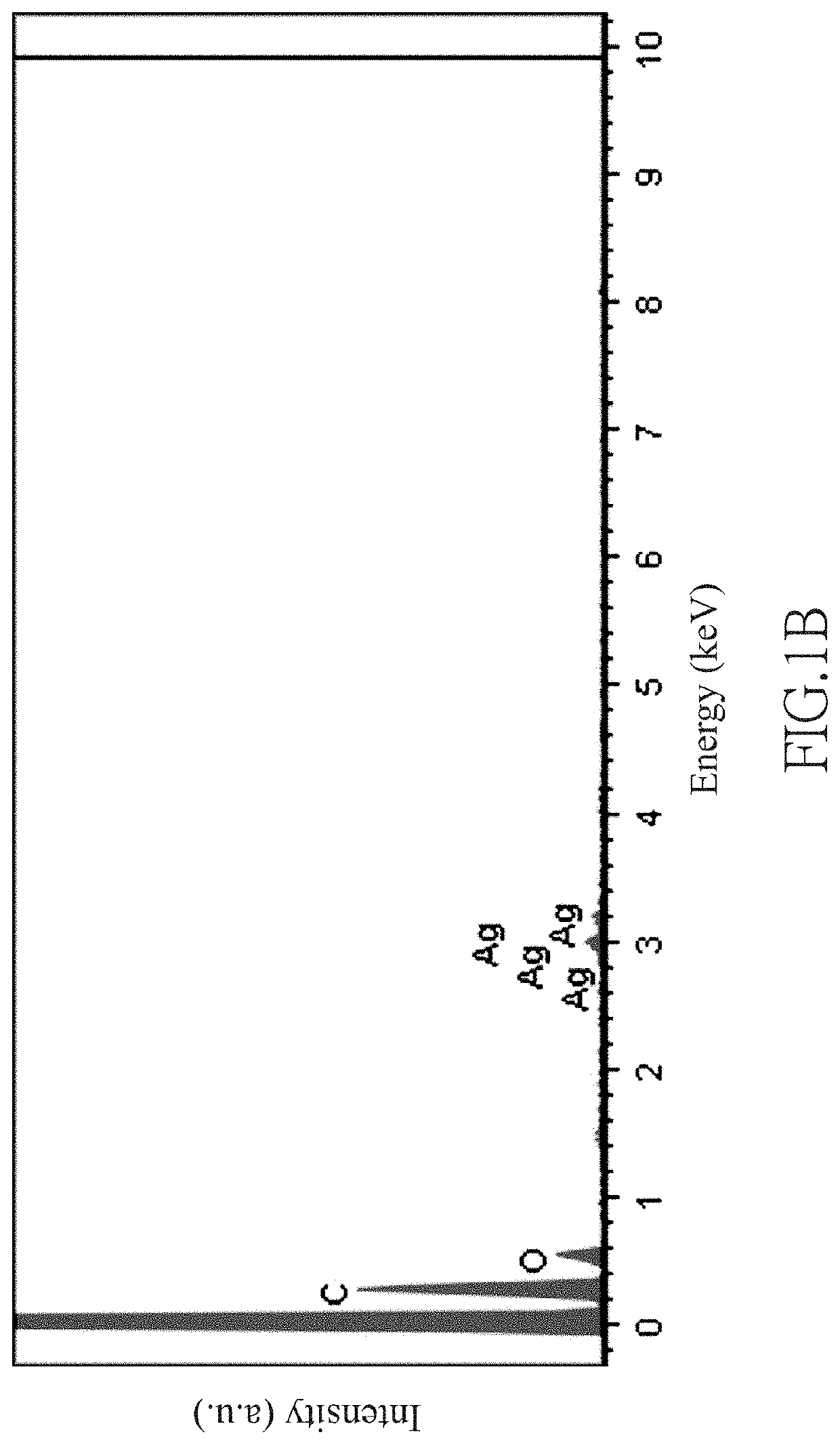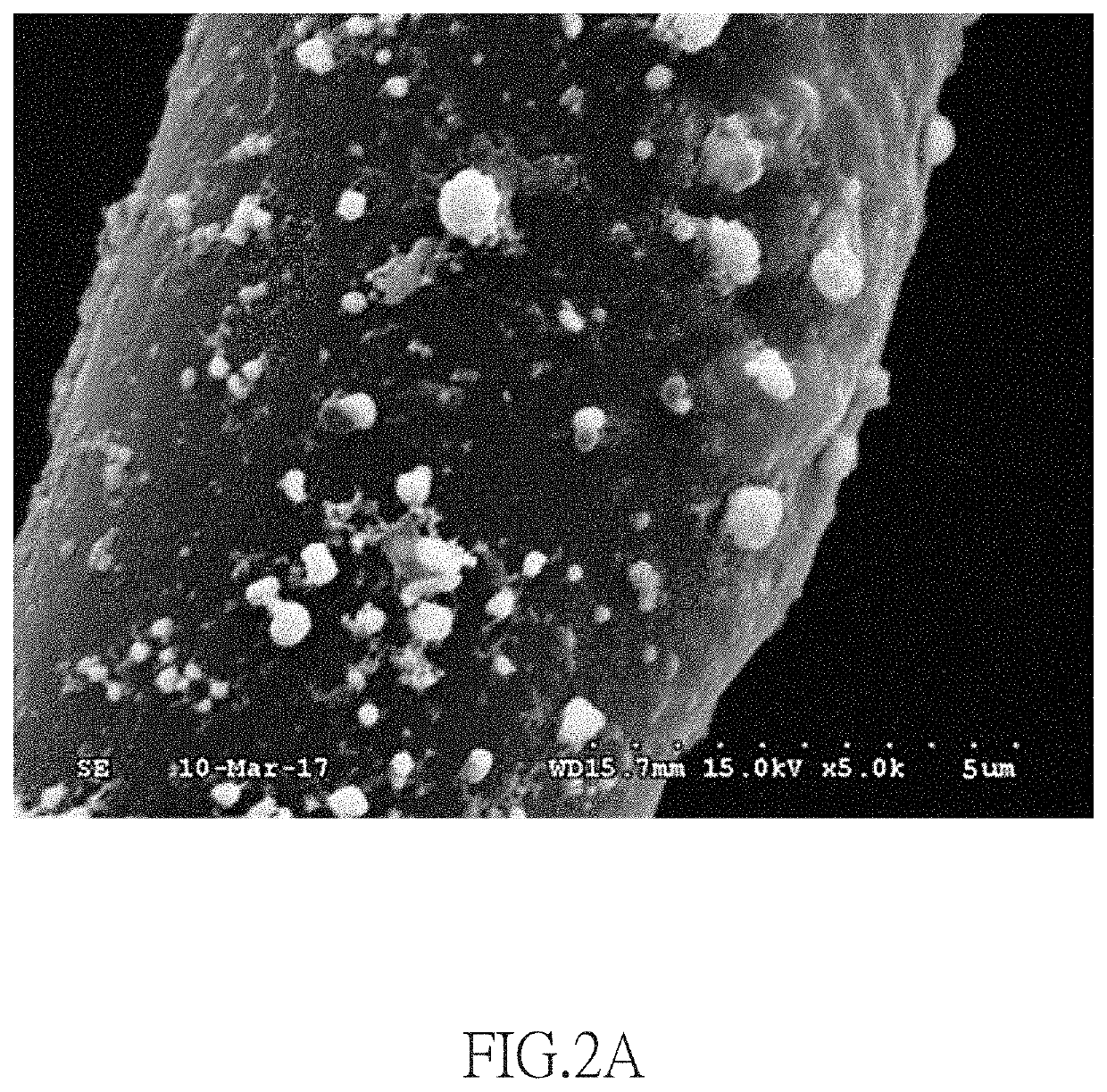Method of making fiber comprising metal nanoparticles
- Summary
- Abstract
- Description
- Claims
- Application Information
AI Technical Summary
Benefits of technology
Problems solved by technology
Method used
Image
Examples
example 1
[0062]0.34 g of silver nitrate (AgNO3) was dissolved in 20 mL of ultrapure water and stirred continuously for 10 minutes to obtain 0.1 M AgNO3(aq). Subsequently, at room temperature (25° C.), a Tetoron fabric was dipped in 6.73 mL of the 0.1 M AgNO3(aq) for 2 minutes. The Tetoron fabric had an area of 5 cm2 and a weight of 1.92 g, and it was made by Tetoron fibers with an average diameter of 10.8 μm. During the dipping process, the Tetoron fibers of the Tetoron fabric were in contact with the 0.1 M AgNO3(aq) to form fibers containing silver ions, thereby obtaining Tetoron fabric containing silver ions.
[0063]Then, the Tetoron fabric containing silver ions was covered by a zinc metal foil with an area of 5 cm2 and a weight of 1.6 g for 15 minutes, so the silver ions of the Tetoron fabric underwent a reduction reaction on the surface of the Tetoron fabric.
[0064]After completion of the reduction reaction, the remaining zinc metal foil which was unreacted to become zinc ions was removed,...
example 2
[0066]10 mg of chloroauric acid (HAuCl4) was dissolved in 99.99 g of ultrapure water and stirred continuously for 10 minutes to obtain 0.01 wt % HAuCl4(aq). Subsequently, at room temperature (25° C.), an activated carbon nonwoven fabric was dipped in 50 mL of the 0.01 wt % HAuCl4(aq) for 30 seconds. The activated carbon nonwoven fabric had an area of 25 cm2 and a weight of 0.38 g, and it was made by cellulose acetate fibers with an average diameter of 16.3 μm. During the dipping process, the cellulose acetate fibers of the activated carbon nonwoven fabric were in contact with the 0.01 wt % HAuCl4(aq) to form cellulose acetate fibers containing gold ions, thereby obtaining an activated carbon nonwoven fabric containing gold ions.
[0067]Then, both upper and lower surfaces of the activated carbon nonwoven fabric containing gold ions were respectively covered by two sheets of magnesium metal foils each with an area of 25 cm2 and a weight of 21 g for 15 minutes, so the gold ions of the ac...
example 3
[0074]15.7 g of gold(III) chloride trihydrate (HAuCl4.3H2O) was dissolved in 200 mL of ultrapure water and stirred continuously for 10 minutes to obtain 0.2 M HAuCl4(aq). Subsequently, at room temperature (25° C.), 200 mL of the 0.2 M HAuCl4(aq) was uniformly sprayed onto a nonwoven fabric. The nonwoven fabric had an area of 400 cm2 and a weight of 6.1 g, and it was made by PAN fibers with an average diameter of 10.1 μm. During the spraying process, the PAN fibers of the nonwoven fabric were in contact with the HAuCl4(aq) to form PAN fibers containing gold ions, thereby obtaining a nonwoven fabric containing gold ions.
[0075]Then, both upper and lower surfaces of the nonwoven fabric containing gold ions were respectively covered by two sheets of aluminum metal foils each with an area of 400 cm2 and a weight of 27 g for 15 minutes, so the gold ions of the nonwoven fabric underwent a reduction reaction on the surface of the nonwoven fabric.
[0076]After completion of the reduction reacti...
PUM
| Property | Measurement | Unit |
|---|---|---|
| Time | aaaaa | aaaaa |
| Time | aaaaa | aaaaa |
| Time | aaaaa | aaaaa |
Abstract
Description
Claims
Application Information
 Login to View More
Login to View More - R&D
- Intellectual Property
- Life Sciences
- Materials
- Tech Scout
- Unparalleled Data Quality
- Higher Quality Content
- 60% Fewer Hallucinations
Browse by: Latest US Patents, China's latest patents, Technical Efficacy Thesaurus, Application Domain, Technology Topic, Popular Technical Reports.
© 2025 PatSnap. All rights reserved.Legal|Privacy policy|Modern Slavery Act Transparency Statement|Sitemap|About US| Contact US: help@patsnap.com



